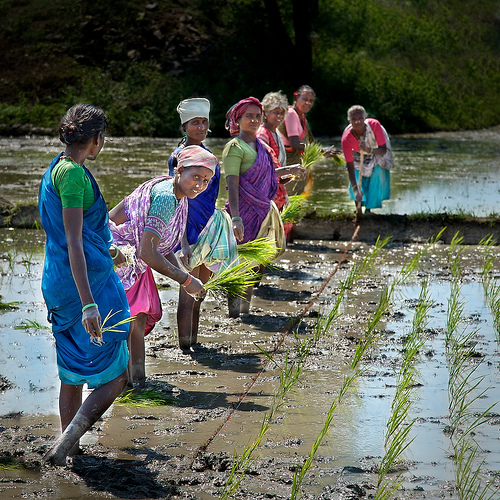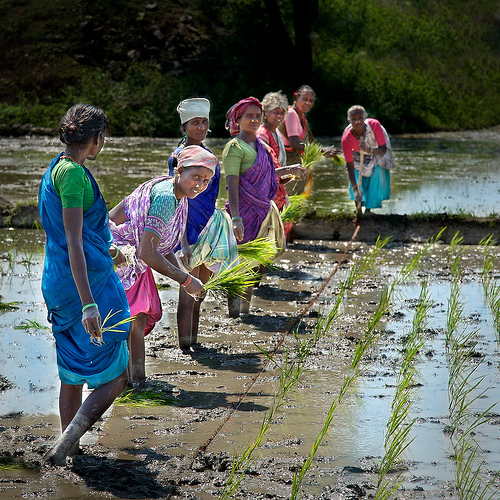 A local irrigation project in southern India.Courtesy Michael Foley Photography via FlickrGeorge Black has a fascinating story about how India might lift its people out of poverty without torching the environment in the current issue of OnEarth, the magazine run by the Natural Resources Defense Council.
A local irrigation project in southern India.Courtesy Michael Foley Photography via FlickrGeorge Black has a fascinating story about how India might lift its people out of poverty without torching the environment in the current issue of OnEarth, the magazine run by the Natural Resources Defense Council.
Written largely as a travelogue through clean energy innovations in northern India, Black’s narrative considers the three essentials the country aspires to deliver to its billion-plus citizens—water, energy, and mobility.
The story includes the requisite bleak facts, like India’s booming population, its over-reliance on coal-fired electricity, the melting Himalayan glaciers that will threaten water supplies, the squalor of slum life, the poor planning of traffic-choked mega-cities, and so on.
The story also includes the requisite rays of hope, like a local water-user’s association in the western desert state of Rajasthan. The jal sabha, or co-op, created its own management plan for a large pond, posting local guards to ensure it wasn’t contaminated and allotting the water supplies democratically. Black observes:
Something significant was happening here, it seemed to me. The jal sabha was blending traditional principles of community organization with a newer entrepreneurial spirit. In the process, India might ease some of the historic tension between village and city. Gandhi believed that the village was India’s beating heart; Nehru, the first prime minister after independence, thought its future lay in the cities. Here was a way to maintain the integrity of the village while building the modest, incremental prosperity that might make it unnecessary for people to migrate to places like the slums …
More interesting, though, is Black’s argument that India’s best bet is to harness the entrepreneurial zeal of its people in finding solutions to energy, climate, and development problems. In a very big country, looking for big fixes might be the very worst approach, especially with a government famous for its bureaucratic stagnation and culture of corruption. For a short time I lived near one such big fix, the Tehri hydropower dam in the mountains north of Delhi. Not only did the Tehri Dam, 100 feet taller than the Hoover Dam, displace hundreds of villagers. It was also built atop an earthquake zone. Among locals there was a pervasive sense it was designed by New Delhi and for New Delhi, with scant attention to local interests.
Small is beautiful, Black argues, particularly with bringing electricity to the countryside. Small, interconnected power plants, powered by solar, hydro, or biomass, are far more likely to succeed, one solar expert tells him. Local planners would be less likely to build a dam on a fault line, and nearly any alternative would be cleaner than coal, which provides 55 percent of the nation’s energy supply.
This skates near the cliché that village wisdom always trumps the knowledge of guys in suits. It’s true Prime Minister Manmohan Singh’s newly elected government could be doing plenty to encourage clean energy innovation. But with one of Singh’s climate negotiators already saying India will oppose putting limits on its greenhouse gas emissions in Copenhagen this December, every bit of small-scale creativity helps.



